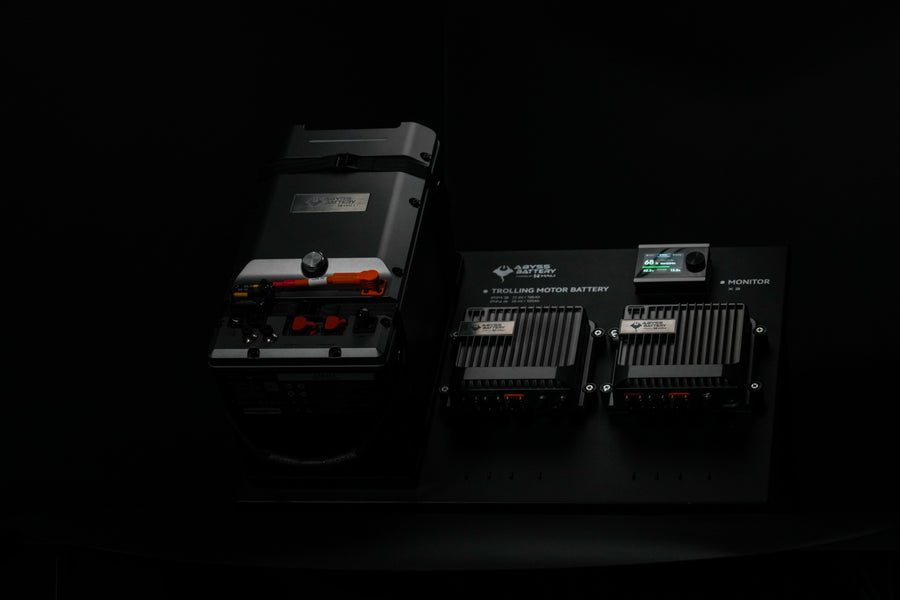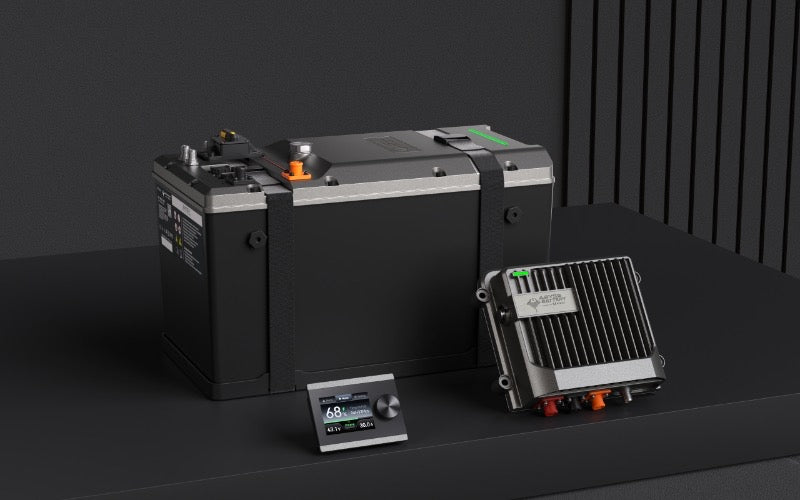How To Tell What Size Battery Your Boat Needs

It’s always fun to take your boat out for a lovely day on the water, but if your battery is the wrong size, you won’t get the best performance. Whether you’ve got a trolling motor or a large outboard, there are quite a few things to consider when deciding which battery to buy.
If you don’t know how to tell what size battery your boat needs, then here are a few steps to get you started.
How Does the Battery Affect a Boat’s Performance?
Batteries lose their potency over time, directly impacting your boat’s performance on the water. A weak battery can force the alternator to work harder, decreasing its life, and insufficient charging will leave you with limited capacity.
Heavier batteries can increase the weight of your craft, slowing it down and leading to higher fuel consumption. Using a marine battery designed for a boat can significantly impact overall performance. With lightweight materials and a robust form factor, marine batteries come in all shapes and sizes, and it may be challenging to know which is best suited to your situation.
Deep Cycle vs. Starter
The first thing to consider when deciding what size battery your boat needs is whether the battery will start or operate the boat. The purpose of a starter battery is to have a separate power source used to get the engine going. Having something set aside ensures that a dead battery won’t leave you stranded.
A deep-cycle battery should get used for the trolling motor and various electronics, giving you a steadier source of power you can use for long periods. While deep cycle batteries are designed to get used and recharged, offering a stable energy source that you can use to operate the craft. If needed, you can use your deep cycle battery to start your engine in an emergency, and there are also dual-purpose batteries that are ideal for both starting and cycling.
CCAs
The best way to tell how many amps you need for your engine is to factor in a single amp for every cubic foot of engine space. Most boat owners will want somewhere between 300-500 CCAs for starting their boat, based on the engine’s size. Remember, you can always use more amps but not having enough will limit performance.
The output required for a deep-cycle engine will require the same CCA rating as the deep-cycle engine. Check your owner’s manual for more details about the CCAs necessary for optimum performance.
What Types of Batteries Are Available?
The water can get rough when operating a boat. Choppy currents and wake from other craft can cause you to bounce around, putting more stress on the battery. Marine batteries are specially designed for boats, featuring a sturdier frame and elevated electrical connectors, so they don’t get wet and short-circuit.
Marine batteries are built from lighter materials than car batteries and hold a longer charge. They’re also made to last much longer than car batteries, with a longer life expectancy. There are many different types of marine batteries, each with its own strengths and weaknesses. You’ll need to know which one you’ll use before determining which size fits your situation.
Lithium
Lithium-ion batteries are known for their low-weight and high-energy density, giving you a powerful option that can reduce the load on your engine. Lithium batteries also have a long life cycle, making them an excellent solution for those who don’t want to swap in replacements constantly.
In most situations, you’ll want a 12V 125Ah battery capable of starting the engine. For trolling, you’ll need a higher voltage, such as a 24v lithium trolling motor battery. The great thing about lithium batteries is that their cases are built with industry standards in mind, meaning they can replace lead-acid batteries with a similar form factor.
AGM
An Absorbent Glass Mat (AGM) battery alters the traditional lead-acid battery design by placing a fiberglass layer between the electrodes, resulting in a completely closed design that won’t spill and doesn’t require any additional maintenance. Compared to lead-acid batteries, AGMs have a longer life and a higher power output.
AGM batteries are great for boat owners since they’ll hold a charge for long periods without losing energy. They work well for both the starter and deep cycle. Check your engine’s manufacturer to get a better idea of what size AGM battery would be best for each purpose.
Gel Cell
Gel cell batteries contain silica mixed with acid to solidify the liquid, making it more stable and versatile because it won’t spill. These batteries are perfect for boats because they can jostle around without causing problems and require little to no maintenance.
The thing to remember with gel cell batteries is that you must recharge them correctly to avoid degradation. Gel cell batteries have less capacity than AGM batteries, meaning you’ll need more for the same output. Look for a 20–101 amp hour range for gel cell batteries.
Wet Cell
Wet cell batteries have been around for a long time and get used in various applications, from utility-level storage to transportation. Traditional wet cell batteries usually contain an electrolyte that must get checked regularly and properly maintained for the best performance.
Newer, more efficient designs have largely replaced marine batteries that use a wet cell or flooded chemical composition. Wet cell batteries are generally safer to charge but less resilient to damage due to the liquid electrolyte. If you’re using a wet cell battery for your boat, you’ll need a 60–200 amp-hours (Ah) capacity.
Get the Most Out of Your Boat by Selecting the Right Battery Size
No matter what type of battery you use for your boat, you’ll need to ensure you have enough capacity to both start and run the engine. Ensure you account for the size of the engine, the type of battery, what you’re using it for, and how long you want to be out when selecting your battery size to ensure you get the most out of it.
Considering all the factors when deciding what size battery your boat needs will enable you to enjoy your day to the fullest.





What battery do I need for a 2005 Yamaha 225 salt water motor
I have a 20 foot hurricane with a 220 motor. What size battery do I need
I have a 21 ft proline with a HDMI 2012 200 hp. What kind of battery do I need. Currently I have a Diehart 1000 CCA 800. But it’s starting to die and need a replacement.
Dory 15ft sportsman with 2 stroke Mercury 75hp ELPTO What Battery please
billk14187@gmail.com
Need a better for cranking my 21.5 ft Ranger. Has a 225 hp motor.
Leave a comment